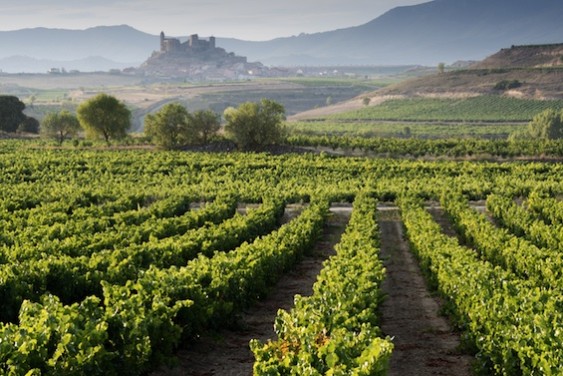Wine labels can be confusing. Especially when they’re in another language and in accordance with the oft-byzantine laws of many European countries. But they don’t have to be. Knowing a few simple things can demystify them fast. That’s a good thing because this has got to be a short post since I am en route to Chile to do some wine tasting down there!
But instead of Chile, let’s turn our attention to its vinographic motherland, Spain. There, one of the most widespread noble grape varieties is Tempranillo, and one of the most famous denominations where they make wine from it is Rioja. Rioja wines can be made from other grapes as well, but Tempranillo is the star.
If Rioja were a movie star, it would be Penelope Cruz. Absolutely gorgeous and a little reserved, it was renowned in its own country for centuries, but came to prominence on the world wine stage only in the past decade or so.
Here are what the terms on that bottle of Rioja (and most other Spanish wines as well) signify, and what they mean for your drinking experience. If only what you learned in high-school Spanish class had been this useful!
There are basically five categories of Rioja that you need to know.

Rioja labels are easy to read once you know a few simple words. Image courtesy of RiojaWine
Joven/Rioja: This literally means “young” in Spanish. But whereas young is a good thing in Hollywood, when it comes to wine, this is usually not your highest-quality offering. Instead, they haven’t been aged much, in barrel or bottle, and are meant to be drunk soon. These wines might not even have the word Joven on them, but might just be labeled as general Rioja.
Barrica or Roble: These are relatively new classifications meant to denote wines that have spent some, but not much, time in oak barrels. Barrica is Spanish word for barrel, and roble means “oak.” Easy enough to remember, and easy enough to drink…it’s recommended to enjoy them within a couple years of release.
Crianza: Now it starts getting interesting. Crianza wines are sort of like the first of the higher-level or reserve wines in Spain. The term means any number of things including “nursed,” “bred,” “brought up” and even “cared for.” Isn’t that sweet? But more importantly, knowing that will help you remember that these wines have spent some time being watched over. At least 12 months in oak barrels and at least 12 months in bottle before release to be exact. Generally speaking, they are usually ready to be drunk when they are released, and in addition to those nice oaky flavors, they retain much of their vibrant fruit character.
Reserva: Qualifications vary from region to region in Spain, but in Rioja, Reserva wines must be aged at least three years, at least one of which must be in oak barrels and two of in bottle. That extra aging in a combination of barrel and bottle is meant to produce more complex, nuanced wines that will develop better over time than the younger wines. Wineries, or bodegas or fincas as they’re called in Spain, tend to use their higher-quality fruit to make these wines.
Gran Reserva: Now we get to the top of the top. Gran Reserva wines are generally only made in the best years with the best grapes available. These wines must be aged at least five years altogether. At least two of those must be in oak, while the remaining three can be in bottle. However, many wineries age their Gran Reservas even longer – releasing wines a decade after they are made is not out of the ordinary! Generally more complex, these wines are made to last for years if not decades.

Rioja is one of Spain’s most famous (and beautiful) regions. Photo credit: Shutterstock.
You don’t have to remember the exact numbers here. The names and order just make sense if you think about them. However, if you do want to have these numbers on hand, the way I remember it is this: Crianza is two years, Reserva is three years and Gran Reserva is five years. Two plus three equals five. Done and done.
One final fact about Rioja wines for you: Unlike many other prestigious regions around the world, which only use French oak barrels, many wineries in Rioja opt for American oak instead. However, many wineries with pretensions to grandeur are switching over to French oak. See if you can taste the difference.
Interesting to learn more about Rioja’s wines? I’d suggest visiting RiojaWine.com for a complete overview of the region and its vintages.

